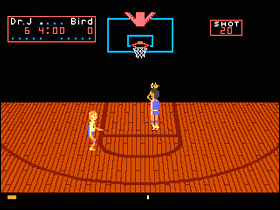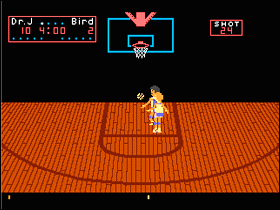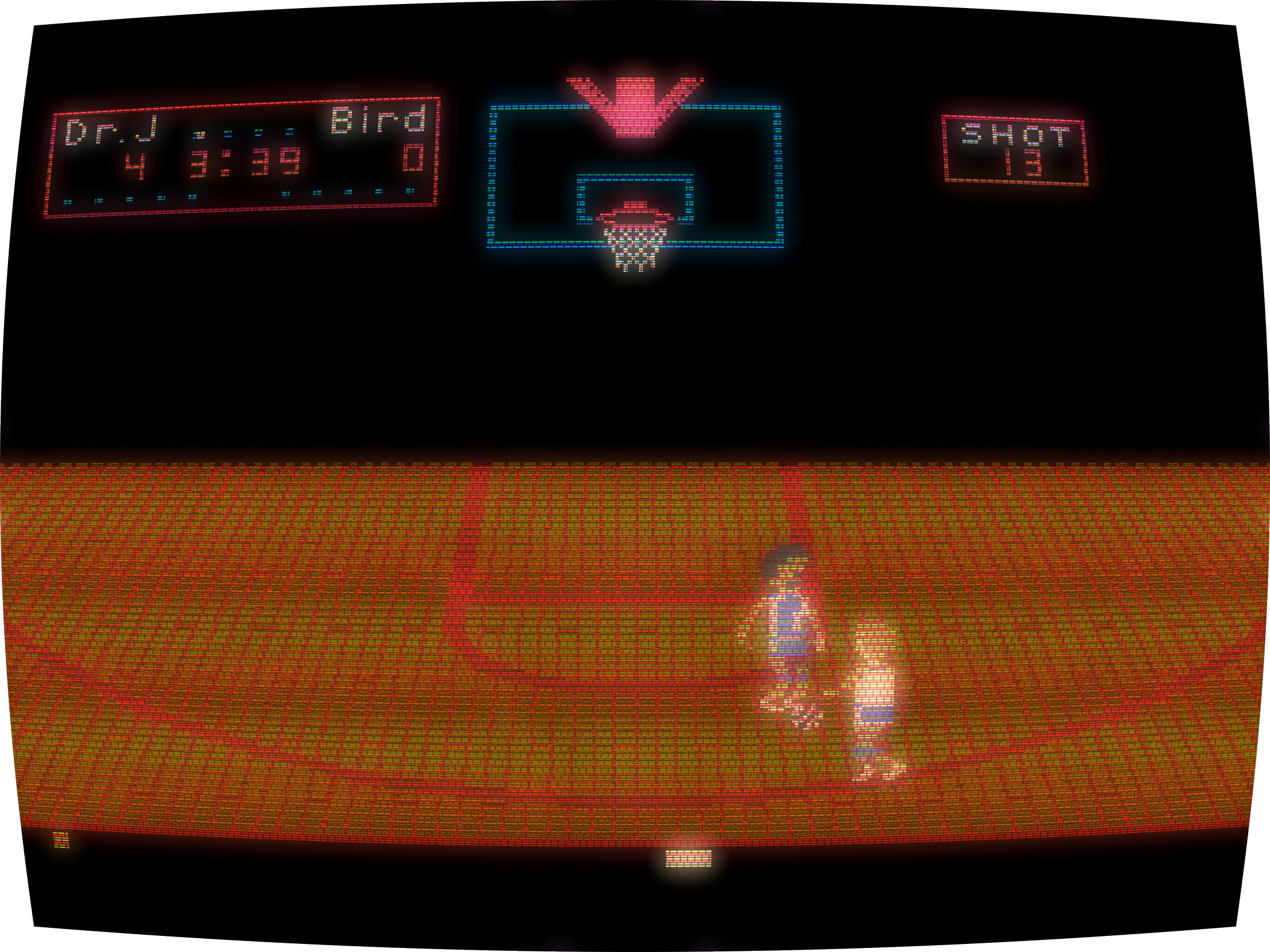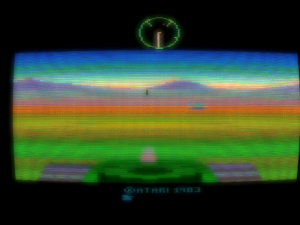 The Game: Dr. J and Larry Bird take to the hardwood for one-on-one half-court basketball action. Each player has his own signature moves, from lay-ups to three-point shots to steals. One or two players can play to a predetermined score or to a time limit. (Atari [under license from Electronic Arts], 1987)
The Game: Dr. J and Larry Bird take to the hardwood for one-on-one half-court basketball action. Each player has his own signature moves, from lay-ups to three-point shots to steals. One or two players can play to a predetermined score or to a time limit. (Atari [under license from Electronic Arts], 1987)
Memories: Having already become a hit on such home computers as the Commodore 64 and Apple II, Electronic Arts’ One On One ushered in a wave of celebrity-driven sports games that would eventually lead the company to a far more profitable franchise in the Madden [insert year of your choice here] football games. Atari had courted (no pun intended) EA as a potential developer of games for the Atari 7800, and while that courtship was short-lived, it did result in one of the better looking iterations of One On One.
 Where the early computer versions of One On One kept the playing field simple out of necessity, the 7800 could flesh things out a bit more; this One One One‘s half-court presents a reasonable pixellated approximation of a hardwood floor. This really doesn’t affect the game itself at all, but it was a major step up from previous versions’ blank, almost-abstract half-court backdrops.
Where the early computer versions of One On One kept the playing field simple out of necessity, the 7800 could flesh things out a bit more; this One One One‘s half-court presents a reasonable pixellated approximation of a hardwood floor. This really doesn’t affect the game itself at all, but it was a major step up from previous versions’ blank, almost-abstract half-court backdrops.
The game was also eminently playable with the 7800’s two-button joysticks – at least as playable as the same title on machines like the C64 and Apple II. One On One still wasn’t a terribly nuanced basketball title, but offered a little more hoops finesse than, say, 2600 Basketball. Fouls, walking and traveling were possible – and so were backglass-shattering slams.
Strangely, though, One On One is also yet another example of the Rip Van Winkle effect that befell the 7800 and its library. In 1984, One On One was seriously cool as sports games went; in 1987, it was already being replaced by an updated version featuring rising star Michael Jordan in place of Dr. J; this new version was already hitting computer systems in 1987, and, sublicensed to Milton Bradley, would hit the NES in 1988. Thanks once  again to Atari shelvking the system and its work-in-progress games rather than releasing them in 1984 when they were ready, this edition of One On One – much like the system for which it was made – arrived just in time to prove how outdated it was.
again to Atari shelvking the system and its work-in-progress games rather than releasing them in 1984 when they were ready, this edition of One On One – much like the system for which it was made – arrived just in time to prove how outdated it was.


